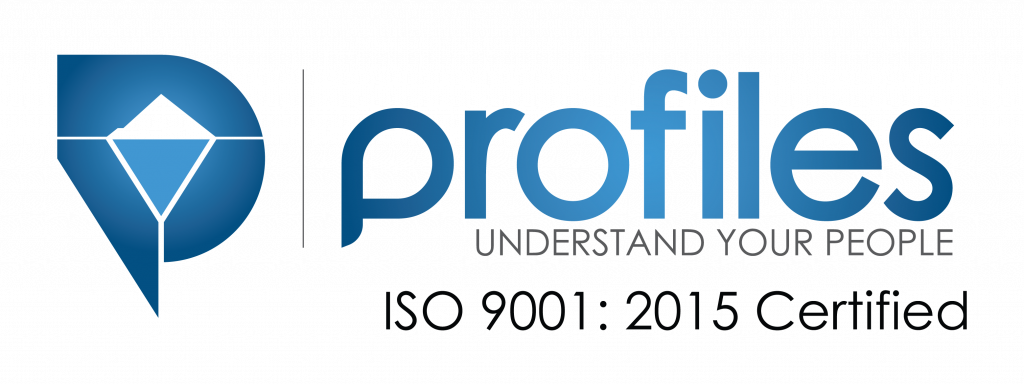The recruitment landscape has changed. Gone are the days when compelling job descriptions and decent salary packages were enough to captivate capable talent.
Today, companies around the world fiercely compete to find, hire, and retain performers who can drive growth and innovation.
This talent war, however, didn’t occur overnight. It started with a widening gap between available jobs and qualified individuals. The rise of remote work, shift in employee priorities, and speed of digital transformation exacerbated this issue as well.
The ManPower Group even found 74% of employers having difficulty acquiring the people they need!
At this point, it’s clear that enticing and keeping top talent isn’t simply a human resource (HR) concern; it’s an essential element that supports your business’s sustainability. To help you navigate this issue, we’ll delve into the talent war’s complexities and provide some key insights.
Is the “talent war” real?
The race for skilled personnel isn’t a myth; it’s a measurable, global phenomenon:
- The United States (US) Bureau of Labor Statistics, for instance, reports their country’s number of job openings consistently outpacing hires since mid-2021.
- Korn Ferry also projects a global talent shortage of over 85.2 million people by 2030—a predicament that can translate to a revenue loss of $8.452 trillion!
Organizations now recruit internationally as well, with remote access to a broader talent pool intensifying competition. Due to this, attractiveness is no longer determined by salary alone, but also growth, culture, and flexibility.
The talent war’s impacts
These factors, meanwhile, pose significant problems, especially to those caught unprepared.
Rising recruitment costs
The soaring demand for proficient candidates have pushed companies to spend more on talent acquisition. According to the Society for Human Resource Management (SHRM) the average cost-per-hire is now $4,700.
Many employers, however, say the total cost of hiring a new employee can reach three to four times a position’s salary.
Instability
Employees are now more willing to make a switch when better opportunities arise. 68% of them are even confident in their ability to swiftly find a new role in today’s market.
With employers catering to desires for better pay, flexibility, and advancement, a key person’s departure can disrupt team cohesion and burden HR with new hiring cycles.
Risks to employer branding
A slow or ineffective hiring process can tarnish your company’s reputation. In 2024, 26% of job seekers declined an offer due to poor candidate experiences—something that can be attributed to poor communication or ambiguous job expectations.
Lack of a competitive edge
Organizations that fail to attract and retain top talent can fall behind in many areas, whether it be customer experience, digital transformation, or operational efficiency. This makes it impossible to stand out, especially in competitive industries.
Trends that influence the talent war
To mitigate the impact of the competitive labor market, you must understand and respond to the shifts reshaping recruitment and retention. Here are the critical ones:
Creativity in hiring
Today, traditional hiring methods—resumes, job boards, and structured interviews—no longer suffice. Companies are rethinking their approach, adopting clever and tech-driven techniques to holistically assess candidates. Think of how artificial intelligence (AI) is now utilized in hiring.
AI interviewers, for instance, are integrated into recruitment processes to improve efficiency, objectivity, scalability, candidate experiences, and overall hiring success. Some smart platforms even gamify assessments, adding fun to the screening process.
As an example, Globe Telecom utilizes HireVue to improve conversions from screening to interview, from interview to offer, and reduce time from endorsement to offer.
Succession planning
While career mobility is increasing, organizations are taking a more proactive stance to talent acquisition and retention.
Through succession planning, they ensure leadership continuity by building internal talent pipelines. Those that don’t think ahead, meanwhile, risk disruptions and the loss of institutional knowledge.
By recognizing quality hires with leadership potential, then offering them growth opportunities, companies maximize the talent at their disposal. This approach offers various advantages, including:
- The ability to fill vacancies when needed
- The capacity to equip workers for their new roles
- A lower need to invest in external talent
- Knowledge transfer between fresh and tenured employees
Emotionally intelligent management
More often than not, people leave managers; not companies—82% of US workers even say they’d quit their jobs due to incompetent leaders.
Those with technical savvy, however, aren’t enough. Today’s employees want managers who understand and support them. Due to this, emotional intelligence (EI) is gaining momentum, as those who possess it effectively build trust with their teams.
The Harvard Business Review (HBR) actually found that companies who prioritize EI enjoy higher productivity and engagement compared to those who overlook it.
Understanding Gen Z
Gen Z is projected to make up over a quarter of the global workforce by 2025. Employers, meanwhile, are starting to recognize that compensation alone doesn’t secure their loyalty, as they consider other facets of employment:
- Purpose: Gen Z wants to work for organizations that align with their personal values, as well as contribute to something meaningful.
- Flexibility: This younger demographic prefers hybrid or remote arrangements, since they place importance on work-life balance and mental well-being.
- Advancement: They’re also keen on employers that offer clear career paths and learning and development (L&D).
- Transparency: Growing up in a hyper-connected world, Gen Z expects regular, actionable feedback. They want to feel seen and respected as well.
- Diversity, equity, and inclusion (DEI): Being driven by values, Gen Z also hones in on your commitment to fair and ethical policies, leadership, and business practices.
Pitfalls of poor hiring
Losing the talent war isn’t just about failing to land an excellent candidate. The deep and lasting effects are quantifiable and, when left unchecked, compounding.
Lower productivity
A poor-fitting hire can drag teams down. For instance, the Organization for Economic Co-operation and Development (OECD) found roughly a quarter of workers reporting a mismatch between their existing skills and their jobs’ requirements.
This misalignment can result in productivity loss, as employees with insufficient proficiencies will struggle to meet project deadlines and innovate. Not to mention, underperformers require more supervision as well, disrupting established workflows.
This is especially disadvantageous in knowledge-intensive fields like research and development (R&D), information technology (IT), and the like.
Poor morale and collaboration
A mismatched hire’s negative effects go beyond productivity. They create friction within teams as well—a critical issue that erodes trust and morale. Not to mention, this also diverts time and attention from strategic priorities to performance issues and conflict resolution.
Employee disengagement and turnover
In addition to workplace tension, teams forced to compensate for a bad hire, or even an unfilled role, can be pushed to their limits. Combined, these variables may easily lead to burnout and disengagement.
In worse cases, the effects of poor hiring decisions may compel employees to leave for healthier work environments.
Financial losses and opportunity costs
Hiring the wrong person or leaving a position unfilled gets expensive. Beyond productivity loss, it results in additional issues, such as:
- Overtime: Current staff may be asked to put in extra hours to compensate for unfulfilled responsibilities, leading to higher labor costs.
- Recruitment: Candidate sourcing activities, such as job advertising and screening, significantly heighten talent acquisition expenditures.
- Lost opportunities: The costs of poor hiring aren’t just monetary; it also costs what you don’t gain. While you manage the fallout, projects get delayed, client expectations aren’t met, and better candidates slip away, thus reducing your brand value.
How to win the talent war: Key strategies
Coming out on top isn’t just about filling open positions; it’s about a holistic approach to acquiring the right people. Here are some tactics you should employ:
Offer competitive salaries & benefits
Although compensation isn’t everything, it’s still a primary motivator for most job seekers. A Glassdoor survey, in fact, found job seekers saying salaries (67%) and benefits (63%) are the top two factors they search for in job ads. To stand out, go beyond base pay and offer:
- Health and wellness packages
- Remote and hybrid work arrangements
- Paid parental leaves
- Learning stipends and tuition assistances
- Financial literacy programs
Leverage AI for recruitment
Although the use of AI in talent acquisition may sound unusual, at times controversial, the reality is it’s here to stay. It streamlines hiring and improves candidate experiences in various ways:
- AI analyzes thousands of resumes in minutes
- It conducts personalized assessments
- Through data and analytics, AI predicts job fit and future performance
- It automates repetitive tasks as well
Used ethically and correctly, AI-powered platforms can reduce bias, minimize cost-per-hire, enhance decision-making, and augment overall recruitment efficiency.
Implement feedback mechanisms
Transparency is critical to the candidate experience, as feedback alone makes job seekers four times more likely to consider your organization.
Hopefuls want to know how their job application is faring and, in cases of rejection, why they fell short—these bits of information offer them opportunities to improve.
To deliver these effectively, regular communication is essential. So, whether it be through email or messaging tools, provide tailored and timely feedback across every step of your recruitment process. AI-powered platforms can deliver this instantly as well!
Build an attractive employer brand
Being known as a desirable workplace matters. To earn such a reputation, you must cultivate an enticing employer brand—a LinkedIn study says 75% of job seekers consider this before applying for a job.
Besides leveraging the aforementioned strategies, share what makes your organization an attractive place to work. For example:
- Feature authentic employee stories on social platforms
- Highlight career development opportunities on your website
- Publicize your company’s values, mission, and culture
Align talent acquisition with company goals
Winning the talent war isn’t just about HR; it’s about your overall business strategy. HR must work closely with leadership to align their recruitment efforts with your organization’s long-term objectives. To properly carry this out, identify:
- Critical, unfilled positions
- Succession gaps
- Skills tied to emerging roles
By addressing such elements, you enable a targeted approach that supports skills-based hiring and compensation, as well as competitiveness.
Retain your people with these HR strategies
Talent acquisition is only half the battle. Without retention, you won’t sustain long-term success and, ultimately, lose the talent war. Here’s how you can keep your best and the brightest.
Foster a healthy company culture
Culture isn’t merely the occasional team lunch or office pizza party; it’s how your organization operates and makes its people feel.
Although it’s often cited as a “soft” factor, its impact on retention is hard and measurable. The SHRM, in fact, reports employees in positive cultures being almost four times more likely to stay with their current employer!
So, to secure your hires’ loyalty, build an inclusive and supportive environment by:
- Protecting their psychological safety
- Promoting diversity and collaboration
- Ensuring leadership transparency
- Recognizing and rewarding constructive behaviors
Offer work-life balance
Work-life balance has become an expectation rather than a simple luxury. With the rise of flexible arrangements and mental health awareness, employees are leaning toward employers that respect their personal time and energy.
To maintain your personnel’s commitment to the organization, show you care for their well-being by:
- Allowing hybrid and remote setups, as well as flexible hours
- Offering wellness programs and mental health days
- Establishing clear boundaries between work and personal time
- Encouraging managers to model healthy behaviors
Provide an inspiring vision or core purpose
Purpose is a powerful motivator, especially for younger generations. Since they want to be a part of something bigger, connect their day-to-day work to a broader mission.
Patagonia, for example, attracts top talent by aligning roles, values, and practices with their environmental activism. To infuse your employees with purpose:
- Make your mission specific and values-driven
- Communicate how each team contributes to the organization’s goals
- Encourage volunteering for initiatives that capitalize on social impact
A purpose-driven culture builds emotional connection—and employees who are emotionally invested are less likely to leave.
Prioritize employee development
What is a key reason personnel leave? The lack of growth opportunities. LinkedIn, in fact, found 94% of employees saying they’d stay longer at a company that invested in their career. To ensure your hires stay, offer advancement paths through:
- Personalized development plans
- Upskilling and reskilling programs
- Building clear pathways for internal mobility
By investing in your workforce’s growth, you send a clear message that they aren’t just filling a role, but building a long-term career.
Recognize and reward contributions
By recognizing employee contributions, you secure two things: engagement and retention. To make your workers’ efforts feel more fulfilling:
- Celebrate small wins and major milestones
- Tie rewards to performance and the organization’s values
- Make recognition timely, authentic, and inclusive
- Tailor incentives to individual interests, like their hobbies
When employees feel valued and appreciated, they’ll invest more into their roles and your company.
Wrapping up—Proactive talent acquisition and retention are your keys to victory
The talent war isn’t a temporary challenge; it’s an ongoing one. Winning it requires a strategic, yet human, approach to hiring and retaining personnel.
Businesses must update their HR practices, understand workforce trends, and implement long-term solutions to secure their most valuable asset: their people.
If you’re looking for ways to identify, enable, and retain your workforce, explore our full suite of solutions. To learn more about how we can help you win the talent war, simply reach out!




